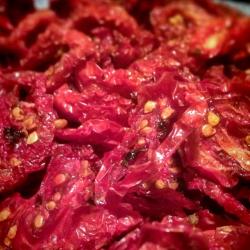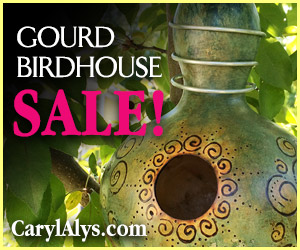
I love being able to grow my own food and to preserve it to help get us through the winter. Although I generally prefer frozen veggies over canned, we live in a hurricane prone area and there is always the possibility that our power could go out for days on end. So, we started canning a few years ago and I must say, I'm hooked!
This is the first year that we've had a large enough asparagus harvest to have any significant amount left over for preserving. I've only eaten canned asparagus a few times and found it to be rather mushy, but my husband L-O-V-E-S canned asparagus on salad in the winter, so I figured we should give it a shot.
Asparagus is a low acid food and can only be canned in a pressure canner with either a hot pack or cold pack method. We decided to try cold pack canning asparagus in our dial-gauge pressure canner. With the cold pack method, you do not pre-cook the veggies before canning. Rather, you pack the raw (cold) asparagus into sanitized jars, cover with boiling water, seal and process.
*DISCLAIMER: Canning food can be dangerous and even deadly. If not done safely, your canned food may become contaminated and could make you sick, or even kill you. The information contained here is not intended to be instructional, but rather an overview of the general procedures I followed. Always precisely follow USDA guidelines & instructions for safe canning (http://nchfp.uga.edu/publications/publications_usda.html).
We started with 9 lbs 4.4 ounces of fresh asparagus and canned (6) quarts. Here's the gist of how we did it:
Step 1
Washed the asparagus. We find that soaking it and then rinsing works better than just rinsing and helps to get out any grit that might be hiding in the asparagus tips. Seriously, nothing ruins a good bite of asparagus more than dirt and grit. It is important to wash it well!

Step 2
Assembled the fresh asparagus and cut the woody part off of each spear and threw into the compost bin (the ends are also great for making stock). I then cut each spear so that it will fit with an inch of head space in the jars. We wanted to can the asparagus whole (rather than cutting up into pieces, which you can also do), so I used wide mouth quart jars and cut each stalk to about 5 inches tall. I used a single spear as a template and cut the others to the same size in batches. I kept the cut off ends for making asparagus soup or adding to stir fry. There is also no shame in eating the ends as you go along!!

Step 3
I sanitized the jars and lids--I usually steam our jars directly in the canner and place the lids and rings into a separate saucepan on the stove and keep hot (although not boiling for the lids). Then, I packed the asparagus (tips up) into the jars. I really squeezed those babies in there -- I didn't want any extra space! I filled the jars with boiling water and left an inch of head space. I then removed any air bubbles and put the lids and rings on finger tight.

Step 4
After everything was assembled and ready, I placed the jars into the pressure canner & secured the lid. I allowed the canner to release steam (without the weight on) for 10 minutes (other canners may require different amounts of time). After 10 minutes, I put the weight on and brought the canner to the appropriate pressure. Once the canner reached the correct pressure, I set the timer. We're at sea level, so we processed the quart jars for 40 minutes at 11 psi. After 40 minutes, I let the pressure canner to come back down to 0 psi before opening it and removing the jars.
And that's it. All in all it was pretty easy.
We started out with 9 lbs 4.4 ounces of asparagus. After cutting them down to fit into the quart jars, we had 6 lbs 1.1 ounces. We canned 6 quart jars of asparagus and made cream of asparagus soup with the leftover stems.
Remember that canning can be dangerous if not done properly. It is important to follow proper, safe procedures when canning. **Always follow the instructions for your canner!
If you are interested in canning, you can find a boat load of information about it at the US Department of Agriculture's website: http://nchfp.uga.edu/publications/publications_usda.html
*DISCLAIMER: Canning food can be dangerous and even deadly. If not done safely, your canned food may become contaminated and could make you sick, or even kill you. The information contained here is not intended to be instructional, but rather an overview of the general procedures I followed. Always follow USDA guidelines & instructions for safe canning (http://nchfp.uga.edu/publications/publications_usda.html).












Join the Conversation!